Artnet News Pro
The Art Market at a Glance: 6 Charts That Map the Biggest Changes in the Industry in 2022
The art market took a wild ride this year—here are some of the biggest changes we charted through the data.

The art market took a wild ride this year—here are some of the biggest changes we charted through the data.

Artnet News

It was a busy year for the art market: auctions and art fairs roared back to life, inflation changed the game, and crypto winter put a chill through the NFT hype cycle.
Through it all, Artnet News Pro was there to capture the ups and downs. Often, the most efficient way to do that was through data. Below, we’ve gathered six of our most revealing charts to demonstrate some of the biggest changes and trends in the market this year.
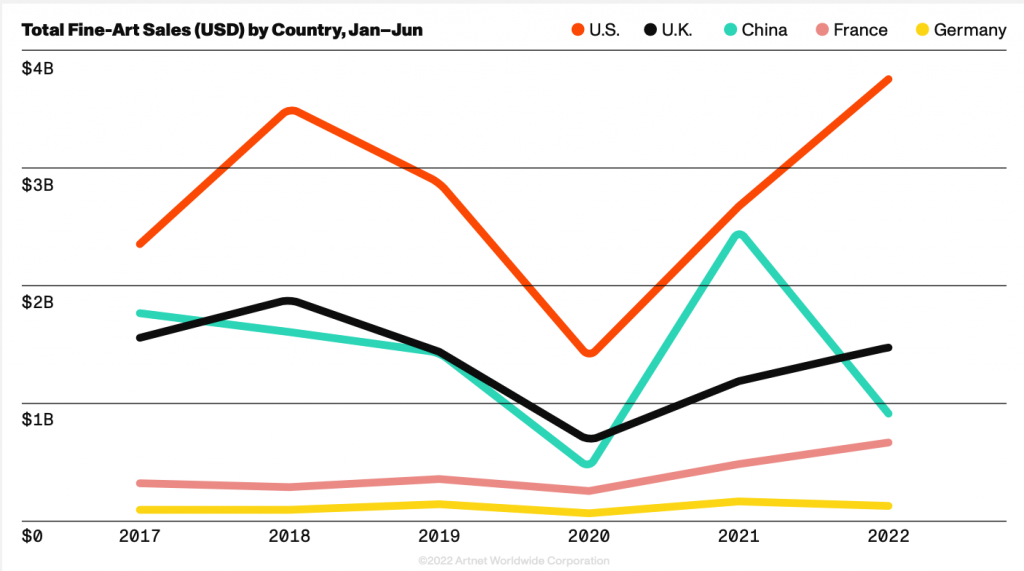
© 2022 Artnet Worldwide Corporation.
In the first half of 2021, China’s economy was still enjoying the benefit of its swift COVID response, and spending by its young, wealthy collectors dramatically narrowed the U.S.’s long-held lead in fine-art auction sales. But 2022 saw these competitors go in opposite directions.
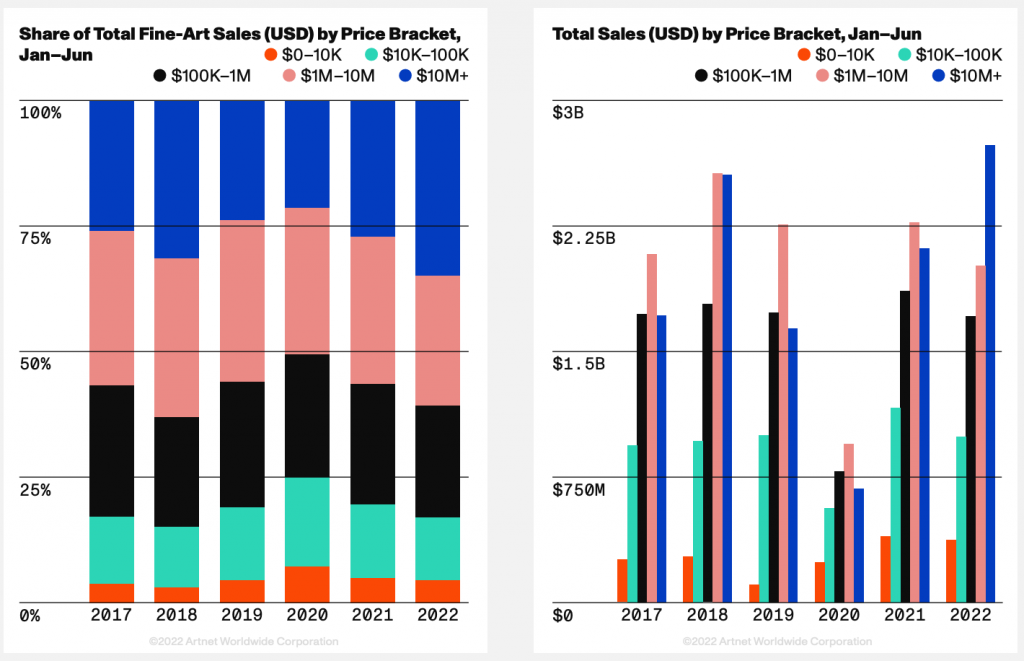
© 2022 Artnet Worldwide Corporation.
In the first half of 2022, sales of fine art remained largely flat compared to the equivalent period in 2021. But the composition of the market—and the most popular price points—changed considerably in just one year.
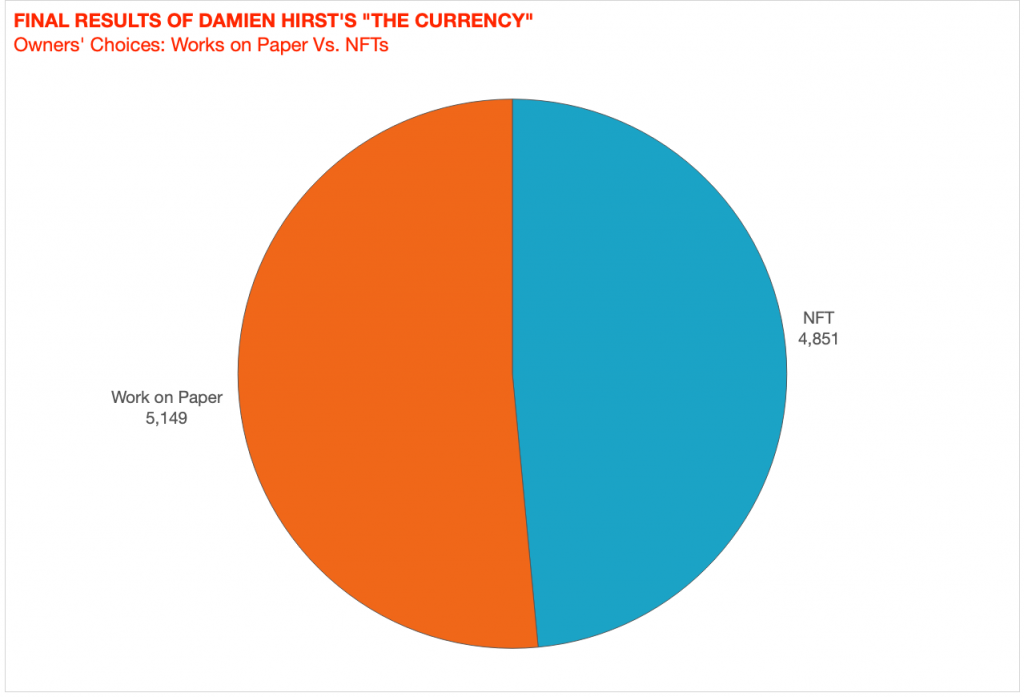
© 2022 Artnet Worldwide Corporation.
Perhaps the year’s most hyped NFT project was Damien Hirst’s “The Currency,” which came with the catch that every buyer would have to make a choice: trade in their NFT for the physical work on paper from which it was digitized, or keep the NFT and allow Hirst to literally burn the corresponding drawing.
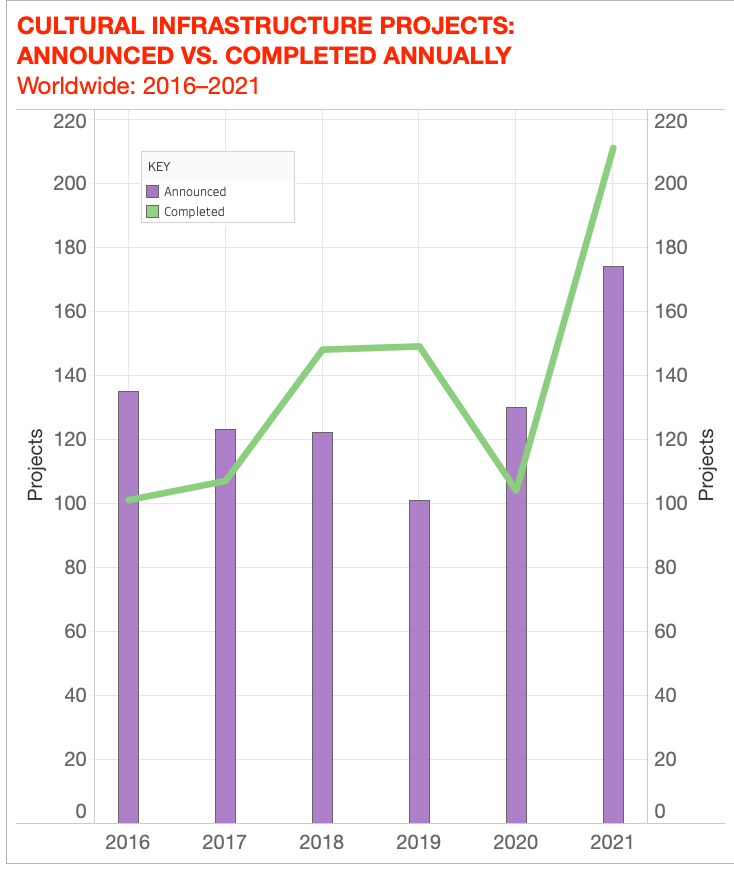
© 2022 Artnet Worldwide Corporation. Data by AEA Consulting.
The art market and the museum world are closely intertwined, so it’s logical to consider how the latter evolved coming out of lockdown.
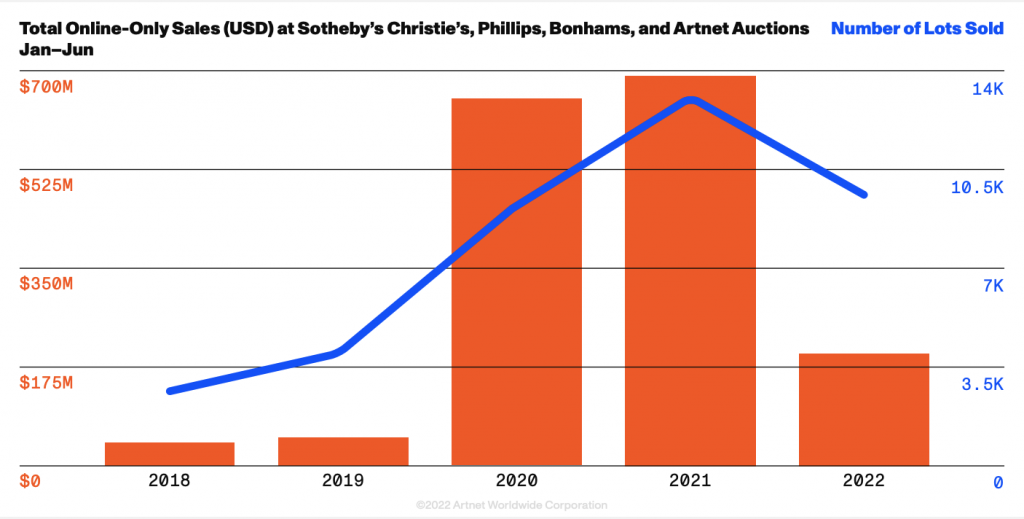
© 2022 Artnet Worldwide Corporation.
Online art sales boomed during lockdown, when there were few other ways to buy works. As live events returned, the growth of the sector has slowed.
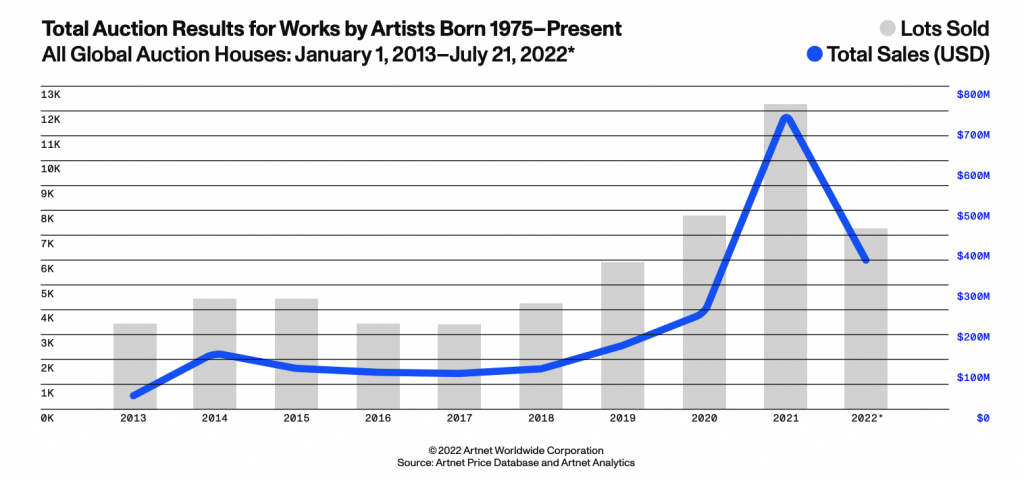
© 2022 Artnet Worldwide Corporation
Is the ultra-contemporary art boom slowing? The data from the first half of the year suggests so.